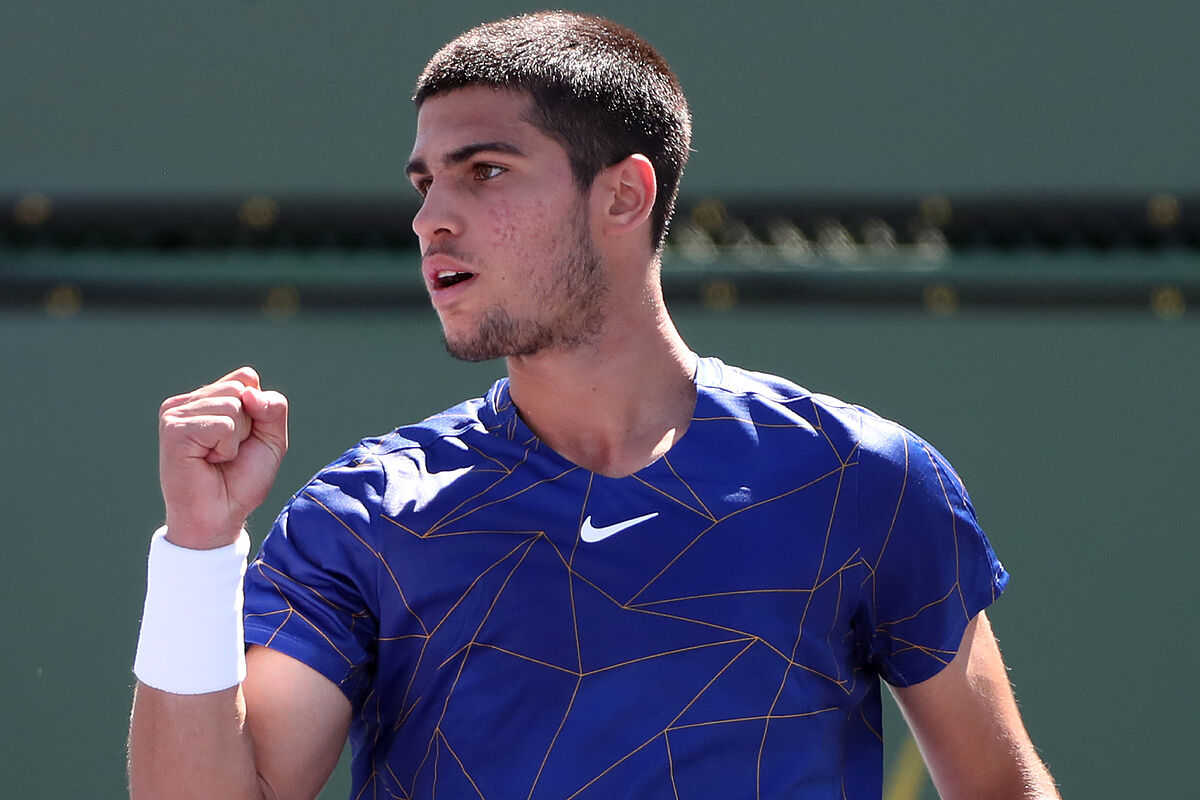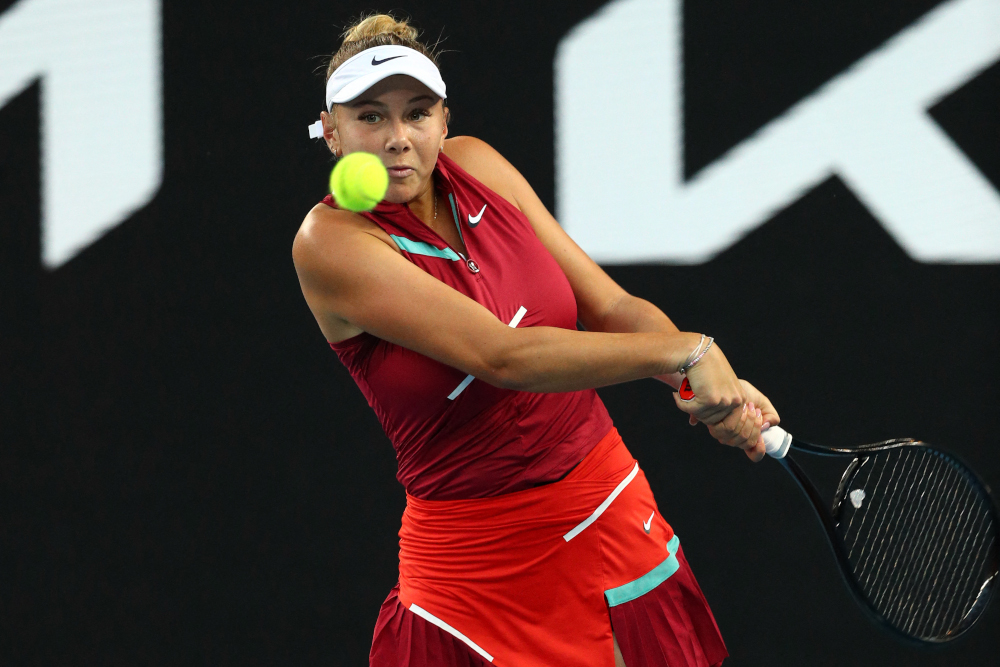The Miami Open men’s and women’s draws feature plenty of opportunity for players who underachieved at Indian Wells to gain rhythm and excel in the Sunshine State.
It has been 3 full years since the month of March was normal in the tennis world. 2020 brought the pandemic, and both the BNP Paribas at Indian Wells and the Miami Open presented by Itau were canceled. In 2021, the Sunshine Double split, as Miami kept its normal spot and Indian Wells took place in October. 2022 finally makes things whole again, with the Sunshine Slam back in its rightful calendar spot.
Change in Conditions
The question is, how do players typically adjust to competing in these two high-profile events on opposite ends of the United States? These Masters 1000-level tournaments are luxe events, but they are taxing. In fact, if a player wins Indian Wells, it’s rare that they go on to win Miami. Novak Djokovic has done it four times, but he’s not in the draw, due to his refusal to get vaccinated.
What happens once the traveling circus leaves California? It very much depends on the player. Let’s first examine the events themselves. A big similarity is court speed. Both events have slow hard court surfaces that have gotten even slower in recent years. Other similarities include wind, which can be significant in both locations, and heat– both are hot events, though Miami tends to be warmer at night.
The huge difference is humidity. The desert air of the greater Palm Springs area, along with a slightly higher elevation, causes both the ball and the body to behave differently than it does in the humid, heavy, sea-level atmosphere of Miami.
Miami Bounce for Seeded Players
A quick review of results from 2019– the last “normal” Sunshine Double year– reveals that most players who were seeded at Indian Wells improved their results at the Miami Open. On the men’s side, 63% of players got better in Miami. On the women’s side, the gains were more pronounced: a full 75% of women seeded in the desert improved once they got to Florida. Bienvenido indeed.
What could be the reason for this? A slightly higher elevation in California could be the equivalent of light altitude training. Secondly, if a seeded player lost in the early rounds at Indian Wells, they have time to rest and practice for Miami. Players who go deep at Indian Wells are more of a mixed bag in terms of their Miami results. They are tired, especially having to play on several back-to-back days, and they are late getting to Miami… but their lungs are well-conditioned. Extremely fit players tend do well in both. In addition to Djokovic, Steffi Graff also won the Sunshine Double twice, for example.
Players to Watch: Women
In Miami, I like players who drop heat. Big serves are exaggerated in humid conditions, even on slow courts. On the women’s side, the #1 seed is the ball-crushing Aryna Sabalenka, and her quarter is relatively open. On the other hand, Sabalenka has struggled with service yips this year. She is also from Belarus, which complicates a potential Round of 16 match up with Ukrainian Elina Svitolina, due to the ongoing conflict between their countries. Sabalenka has been uneven. I know she’ll regain her form eventually, and these hard courts favor her big windup.
Also in that quarter, Simona Halep is playing better again, losing to Iga Swiatek at Indian Wells. She got frustrated in that semifinal match and struggled to stay even-keel. However, it will help her to know she lost to the eventual champion– someone whose level was sky high. Halep can grind with anyone, and sometimes the Miami heat requires it. Stars in Halep’s section include Emma Raducanu, who has yet to put it together since the US Open, and Karolina Pliskova, who is still regaining form after a hand injury. The coast is fairly clear for Halep until Sabalenka.
The 2nd quarter is wide open. Ons Jabeur is feeling a sophomore slump after breakthrough achievements in 2021. Angelique Kerber has the chops but has been inconsistent in the later stages of her career. Australian Open finalist Danielle Collins skipped Indian Wells and has been dealing with her business interests. She also might feel pressure to perform in her home state. A player who could definitely step up from her Indian Wells result is the hard-serving Anett Kontaveit, who lost a close match to Marketa Vondrousova.
The bottom half of the Miami Open draw features a potential blockbuster rematch of rising WTA stars Paula Badosa and Maria Sakkari, who both had great runs at Indian Wells, with the Greek only losing in the final. Look for Badosa to get even. Both these players are incredibly fit and should acclimate well to Miami, but the Spaniard’s forehand is more consistent.
In the final quarter, I think Swiatek could have a decent run but will feel fatigue. I also don’t like that she has Coco Gauff in her quarter. Petra Kviotova does not play well in hot, humid conditions, so my player to watch in this section is two-time Grand Slam champion Garbine Muguruza, who most definitely will be motivated to improve on her early-round loss to Ali Riske. Plus Mugu is a power player, which I like in Miami.
My players: Halep, Kontaveit, Badosa, Muguruza
SF: Halep, Badosa
F: Badosa
*****
Players to Watch: Men
The rental car company Hertz became famous by adopting the slogan, “We’re number 2, we try harder.” It worked so well, Hertz became #1. I think this applies to Daniil Medvedev. Having lost his #1 ranking with a (yet again) subpar performance at Indian Wells, I expect Meddy to try harder. The pressure of the last few weeks on the Russian might ease up a little with #1 off his plate. I also like the conditions for his serve better in Miami. Standing in his way will be Denis Shapovalov, and the Canadian’s game is suited to this city. Shapo had a nice run to the semifinals in 2019 and lost last year to eventual champion Hubert Hurkacz. Circle a potential Medvedev – Shapovalov match in the Round of 16.
In the 2nd quarter, hot-hitting Carlos Alcaraz has all the potential to explode forward in Miami. Yes, he lost to Rafael Nadal in the semis of Indian Wells, but there’s no shame in goat losses. If the 18-year-old Spaniard can keep his head down and avoid listening to the hype– and by all accounts he has that kind of mentality– look for a strong run. In his section: Indian Wells champion Taylor Fritz, who is exhausted with a bum ankle, under-performing Stefanos Tsitsipas and still-finding-his-rhythm Felix Auger-Aliassime. Alcaraz has the ability to handle all these potential matchups. It’s a shame Medvedev and Alcaraz are in the same half, because to me, this would make a bang-up Miami Open final.
The 3rd section of the Miami Open men’s draw is a true talent-filled toss-up. If Matteo Berrettini were 100% healthy, he’d be my pick because of the Italian’s power and touch around the net. Andrey Rublev has been exhausting himself, and the signs of mental wear showed when he bloodied his own hand punching his racquet against Fritz at Indian Wells. Jannik Sinner famously made the Miami Open semifinals last year but lost to Hurkacz in a subpar performance. Opelka played brilliantly in a loss to Nadal last week, but I question how well Reilly will play if the heat turns extreme. A quick check of the forecast shows the first week as temperate, with things heating up a tad in week 2.
The final section of the men’s draw has opportunity written all over it. Alexander Zverev anchors the quarter, but he’s on probation. It’s hard to play freely when you know one wrong move could end your season. Grigor Dimitrov has been training hard under a new coach but carries questionable confidence. Lefty Brit Cameron Norrie, former champion John Isner and patiently-he-waits Casper Ruud all have a shot in this part of the draw.
My players: Medvedev, Alcaraz, Opelka, Norrie.
SF: Medvedev, Norrie
F: Medvedev

















